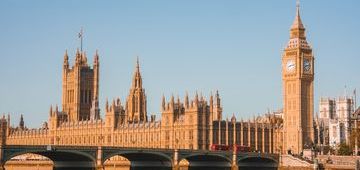The review has reaffirmed a picture already painted by other analyses to date, in which the health burden of coronavirus is shouldered disproportionately by those already at the sharp end of the UK’s deeply entrenched inequalities in health outcomes. [2]
First and foremost in this group are people from Black and Asian ethnic backgrounds, among whom the COVID-19 death rate is substantially higher than those from a white British background.
The review found that:
- People of Bangladeshi ethnicity have around twice the risk of death as White British people.
- People of Chinese, Indian, Pakistani, Other Asian, Caribbean, and Other Black ethnicity had between 10 and 50% higher risk of death.
- Death rates in the most deprived areas are more than double those in the least deprived areas.
- People over 80 were seventy times more likely to die than those under 40.
- There was a strong regional pattern, with London showing the highest diagnoses and death rates.
These findings on the increased risk levels for various BAME groups came after accounting for other factors that could explain some of the differences between groups, including age, sex, deprivation, and region. However, the analysis was not able to account for other factors, such as comorbidities, occupation, and household composition. These are important, as there are high proportions of BAME workers in key occupations, and many from BAME groups tend to live in larger and multi-generational households, both of which can lead to higher risk of exposure to the virus.
The review also highlighted the implications of the findings for controlling coronavirus in the future, stating that unless these inequalities can be addressed, it will be difficult to control the spread of the virus.
It appears from the PHE analysis that the impact of COVID-19 follows a similar pattern to so many of the deeply ingrained public health challenges that we face – from morbid obesity to deaths from smoking. It is always the most vulnerable that are impacted by public health challenges, and that has a good deal to do with the environments and social determinants of health which people face.
Duncan Stephenson, Deputy Chief Executive of the Royal Society for Public Health, said:
“The new PHE disparities review makes for grim but essential reading; and yet, in a perverse and tragic way, this is not news. In a world in which so many things have changed around us, the systematic shifting of suffering from the powerful onto the powerless has been one reliable constant. It is a salutary reminder that the risks in society continue to be distributed unevenly, so that they fall hardest on the shoulders of our most vulnerable and marginalised communities.
“The new review is a welcome and up-to-date addition to the evidence base, and it is a powerful foundation for change, but it absolutely must be followed up by action from Government. There remain key unanswered questions about why these disparities are so severe, and work to address these in the coming months will require continued and deeper engagement with the communities most at risk.”
Endnotes:
[1] COVID-19: Review of disparities in risks and outcomes, Public Health England, 2 June 2020 https://www.gov.uk/government/publications/covid-19-review-of-disparities-in-risks-and-outcomes
[2] Coronavirus-related deaths by ethnic group, England and Wales methodology, Office for National Statistics, 7 May 2020


